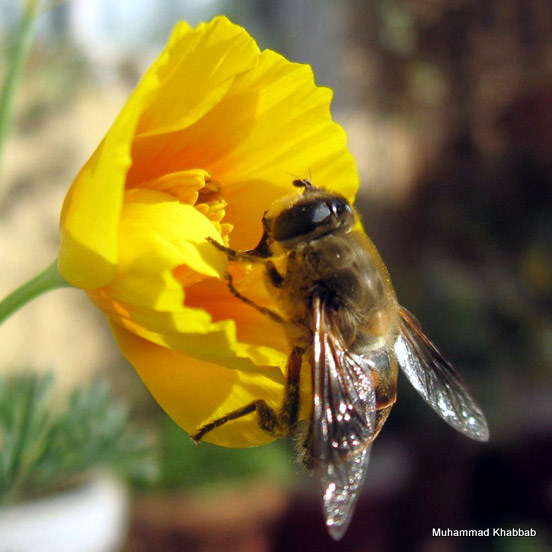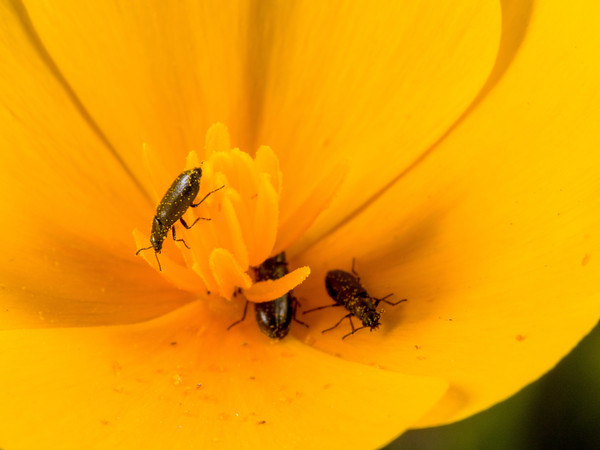Interactions
E. californica interacts in various ways with other species, along with having an effect on humans. E. californica is on the bottom of the overall organism food web since it is a plant, making it a primary producer. It obtains its food through the process known as photosynthesis. Through photosynthesis, E. californica converts energy from the sun into chemical energy in the form of sugars, etc., which it then uses as its food source.
E. californica has both mutualistic and parasitic interactions with other species. It has a mutualistic relationship with various pollinators and a commensal relationship with insects. Common pollinators of the E. californica include sweat bees, bumble bees, mining bees, and the most commonly known, European honey bees (Smith 2010). These bees spread E. californica pollen to be produced and grown in new areas. In return, the E. californica give to the various bees’ nectar for honey (Smith 2010). This relationship demonstrates a mutualistic relationship between E. californica and pollinators. Along with bees, various insects come into contact with the E. californica, creating a commensal interaction. A commensal interaction is when one organism, like E. californica for example, is neither benefited nor harmed due to the relationship and the other organism, like a beetle for example, is benefited from the relationship (Smith 2010). Floral visitors, such as butterflies, hover flies, horse flies and various beetles, including the Deathwatch beetle and the tiger beetle, meet with E. californica in pursuit of refuge, not harming the flower in any way (Smith 2010).
Photo courtesty of Muhammad Khubbab. Photo courtesy of Tony Finnerty.
Although E. californica is often pollinated and unaffected, it can also be harmed by various insects in a parasitic interaction. The most frequently encountered insects that harm E. californica are aphids, leafhoppers, thrips, and larvae from lepidopteran (Smith 2010). These pests feed off of the sap of E. californica, along with leaves and flowers, which in turn reduces floral counts and creates leaf stippling in the California poppy (Smith 2010). Various diseases can also be spread to E. californica through other species. Different diseases to the roots of E. californica include Verticillium, Rhizoctonia solani, and Sclrotinia sclerotiorum (Smith 2010). More common diseases, however, include Erysiphe, which causes a powdery mildew, and Botrytis, which causes gray mold (Smith 2010). Both of these are generally temporary, and E. californica recovers as chances of disease development decrease with environmental conditions (Smith 2010).
E. californica has various interactions with humans as well. E. californica was used by the indigenous California Indians as a source of food, and still is today (Master Gardener 2010). Several groups of California Indians would boil the plant to eat as a sort of vegetable (Master Gardener 2010). Although E. californica can be consumed, it is important to note that the poppy may be toxic when orally taken without adequate preparation (Smith 2010). E. californica is also used medicinally. Over thirty secondary metabolites and chemicals have been secluded from E. californica and have created interest in their cancer treating and antibacterial possibilities (Smith 2010). It is also a plant with calming, pain killing and anti-spastic properties, but unlike opium poppy alkaloids, it is not known for creating addiction (Master Gardener 2010).


